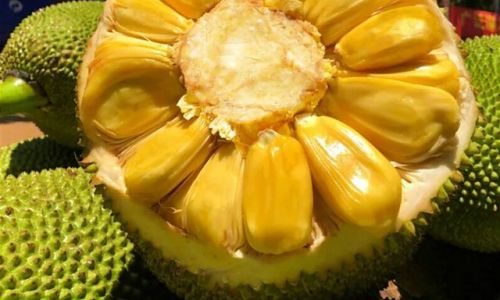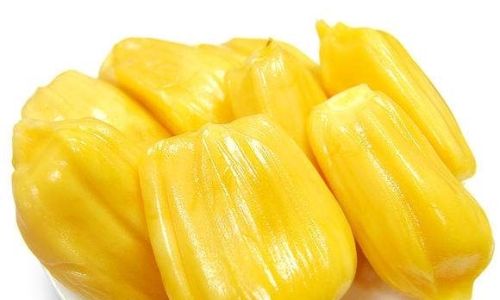Jackfruit, a tropical giant native to South and Southeast Asia, has gained global popularity for its unique flavor, versatility, and nutritional profile. Weighing up to 80 pounds and boasting a bumpy, green exterior, this fruit is a powerhouse of vitamins, minerals, and dietary fiber. However, its large size and perishable nature often raise questions about optimal storage methods. One of the most common queries is whether refrigeration can extend its shelf life without compromising its texture or taste. This article explores the science behind jackfruit preservation, the impact of refrigeration, and practical tips to maximize freshness.
Understanding Jackfruit’s Shelf Life
At room temperature, a ripe, uncut jackfruit can last between 3–5 days, depending on environmental conditions like humidity and temperature. Once cut, however, its exposure to oxygen and microorganisms accelerates spoilage. The flesh becomes sticky, and the aroma—often described as a blend of banana, pineapple, and mango—intensifies, which, while pleasant initially, can turn sour as decay sets in.
The Role of Refrigeration in Food Preservation
Refrigeration slows down enzymatic reactions and microbial growth by lowering temperatures to around 40°F (4°C). For most fruits, this process delays ripening and spoilage, but its effectiveness varies by species. Fruits like apples and berries thrive in cold storage, while tropical varieties like mangoes and bananas may suffer texture changes. Jackfruit, being tropical, requires careful handling to balance preservation with quality retention.
Refrigerating Whole vs. Cut Jackfruit
Whole Jackfruit: A mature, unopened jackfruit does not benefit from refrigeration. Its thick, inedible rind acts as a natural barrier against pathogens and moisture loss. Storing it in a cool, dry place (ideally 55–60°F/13–15°C) extends its life by 1–2 weeks compared to room temperature. Refrigeration may cause condensation, leading to mold growth on the rind.

Cut Jackfruit: Once sliced, the fruit’s inner flesh and pods (known as “bulbs”) become vulnerable. Refrigeration is highly recommended here. Place cut pieces in airtight containers or resealable bags to prevent odor absorption (jackfruit has a strong scent that can permeate other foods). Properly stored, refrigerated jackfruit can last 5–7 days.
Impact of Refrigeration on Texture and Flavor
While refrigeration inhibits spoilage, it may alter the fruit’s texture. The cold environment can cause the flesh to become slightly mushy or watery, especially if stored beyond a week. To mitigate this, consider these tips:
- Wrap Tightly: Use plastic wrap or beeswax covers to minimize air exposure.
- Avoid Overcrowding: Ensure adequate airflow in the fridge to prevent moisture buildup.
- Consume Promptly: Prioritize refrigerated jackfruit within 3–4 days for optimal taste.
Freezing for Long-Term Storage
For extended preservation, freezing is ideal. Remove the bulbs from the rind, discard seeds (or roast them for a crunchy snack), and coat the flesh in lemon juice to prevent browning. Spread the pieces on a baking sheet, freeze until solid, then transfer to freezer-safe bags. Frozen jackfruit retains quality for 8–12 months. Thaw in the fridge overnight before use.
Signs of Spoilage
Refrigeration delays decay but does not halt it indefinitely. Monitor for:
- Foul Odor: A fermented or alcoholic smell indicates bacterial activity.
- Mold: Fuzzy spots (usually green or black) on the flesh or rind.
- Texture Changes: Excessive softness, sliminess, or discoloration.
- Off-Flavor: A bitter or sour taste compared to the fruit’s natural sweetness.
Nutritional Benefits of Jackfruit
Beyond preservation, jackfruit’s nutritional value makes it a worthy addition to diets. A 1-cup serving (165g) provides:
- 157 calories
- 3g protein
- 38g carbohydrates (including 3g fiber)
- Vitamin C (23% DV)
- Vitamin B6 (18% DV)
- Potassium (14% DV)
It is also low in fat and sodium, making it heart-healthy. The fruit’s high fiber content aids digestion, while antioxidants like vitamin C combat oxidative stress.

Creative Uses for Refrigerated Jackfruit
Refrigerated jackfruit lends itself to various culinary applications:
- Salads: Toss with greens, avocado, and citrus dressing.
- Smoothies: Blend with coconut water and mango for a tropical drink.
- Stir-Fries: Sauté with vegetables and soy sauce for a vegan “pulled pork” texture.
- Desserts: Freeze for creamy ice cream or bake into cobbler.
Environmental and Cultural Considerations
Jackfruit’s rise in popularity aligns with global trends toward plant-based diets and sustainable agriculture. As a “drought-resistant” crop, it requires minimal water compared to almonds or avocados. However, improper storage contributes to food waste—a critical issue given that 1.3 billion tons of food are discarded annually. Refrigeration, when used judiciously, reduces waste by extending edibility.
Conclusion
Refrigeration is a viable tool for preserving cut jackfruit, offering a 5–7 day window to enjoy its tropical sweetness without significant quality loss. Whole fruit, however, fares better in cool, dry pantries. By understanding the interplay between temperature, humidity, and storage methods, consumers can balance convenience with sustainability. Whether sliced into salads or frozen for future smoothies, jackfruit’s adaptability—both in the kitchen and the fridge—cements its status as a 21st-century superfood.
In a world where food security and environmental impact are paramount, mastering preservation techniques like refrigeration ensures that this “jack of all fruits” continues to nourish and delight for years to come.





0 comments